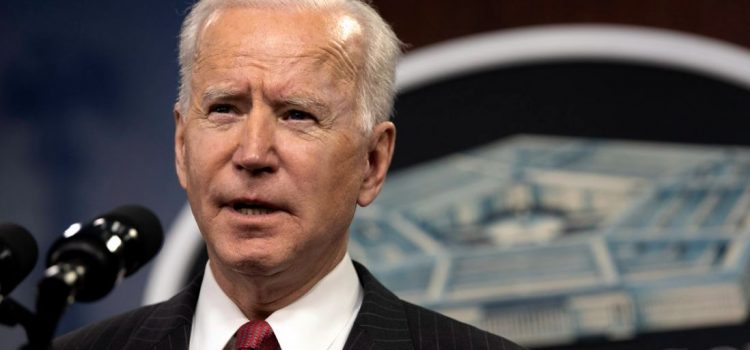
This is a free excerpt from one of Shortform’s Articles. We give you all the important information you need to know about current events and more.
Don't miss out on the whole story. Sign up for a free trial here .
What is Bidenomics? Why is it being compared to Reaganomics? And will it achieve its goals?
The term “Bidenomics,” which has gained attention as President Biden prepares for a 2024 presidential run, refers to a set of policies Biden introduced. Experts are drawing parallels between Bidenomics and Reaganomics because both propose fresh approaches to boost economic growth.
Continue reading to learn about Bidenomics and how it compares to Reaganomics.
Overview of Bidenomics
What is Bidenomics? Bidenomics is a set of policies proposed by President Biden to grow the economy and support the middle class. The White House embraced the term after several media outlets critical of the president’s economic policies started using it in a negative way. Biden’s team adopted and rebranded Bidenomics to highlight what he saw as the positive impacts of his economic policies and signal a departure from Reaganomics’ trickle-down policies.
Bidenenomics centers on three key principles:
- Invest in America’s future.
- Strengthen and support American workers to boost the middle class.
- Encourage competition to reduce costs and support small businesses.
Bidenomics vs. Reaganomics
Some experts are comparing Bidenomics to Reaganomics because both economic agendas presented innovative ideas on how to grow the economy by boosting production and rethinking the role of competition. Bidenomics and Reaganomics differ in key ways:
Economic priorities
- Bidenomics emphasizes worker protections, health care, and investing in green energy and sustainable development to address climate change.
- Reaganomics prioritized reducing domestic spending, as well as cutting regulation and corporate and marginal tax rates to free businesses to pursue profit as they saw fit; it didn’t emphasize environmental concerns.
Income equality
- Bidenomics aims to promote economic opportunities for the middle and working classes and reduce income inequality.
- Reaganomics embraced the trickle-down theory, but increased income inequality.
Economic approach
- Bidenomics supports more government investment and regulation and questions the benefits of unrestricted trade.
- Reaganomics sought less government involvement and embraced global trade.
Competition strategy
- Bidenomics is more skeptical of corporate power and advocates government action to ensure fair competition.
- Reaganomics believed in letting markets self-regulate.
Global trade
- Bidenomics prioritizes American workers’ interests over consumer benefits from global markets.
- Reaganomics embraced free trade and globalization, aiming to expand global economic ties.
The Pro-Bidenomics View
Bidenomics proponents say the president’s economic agenda will build a better future for all Americans by prioritizing:
- Quality of economic growth over quantity. Bidenomics endeavors not just to increase GDP, but to ensure that growth benefits the majority of Americans and reduces inequality, and that investments are made in critical sectors to protect the environment and bolster national security.
- A hands-on government approach. Bidenomics counters a long-held belief by both Republicans and Democrats that “markets always allocate capital productively and efficiently.” Bidenomics gives the federal government a more active role in:
- Targeting private investment to preferred sectors through regulations and subsidies.
- Promoting and guiding specific industries.
- Shaping trade.
- American workers, not consumers, in trade. Bidenomics’ US foreign policy prioritizes workers’ rights, climate policy, and tax compliance over consumer interests and competition.
Experts say that Bidenomics has delivered significant results:
- The US economy saw significant growth in Biden’s first year as president, with a nearly 6% increase in GDP and the creation of 13 million jobs.
- The president passed several key bills, including:
- The Bipartisan Infrastructure Bill.
- The CHIPS and Science Act.
- The Inflation Reduction Act.
- The $1.9 trillion American Rescue Plan.
The Anti-Bidenomics View
Critics contend that Bidenomics is not without its problems, including that it:
- Fails to acknowledge that the government can be less efficient than markets in allocating capital and resources.
- Defines market failures in overly broad terms—which risks excessive government intervention and disrupting economic dynamics.
- Has contradictory foreign and domestic policies, with buy-American initiatives creating tension with allies and potentially limiting economic cooperation.
Further, some contend that despite its touted accomplishments Bidenomics has fueled economic challenges:
- Although inflation has declined, the country faces the highest rate in four decades, leading to a significant increase in the cost of living.
- Many workers’ wages haven’t kept pace with inflation, resulting in a decrease in real pay.
- The federal deficit increased from $984 billion to $1.5 trillion as a result of spending on major initiatives.

Want to fast-track your learning? With Shortform, you’ll gain insights you won't find anywhere else .
Here's what you’ll get when you sign up for Shortform :
- Complicated ideas explained in simple and concise ways
- Smart analysis that connects what you’re reading to other key concepts
- Writing with zero fluff because we know how important your time is






